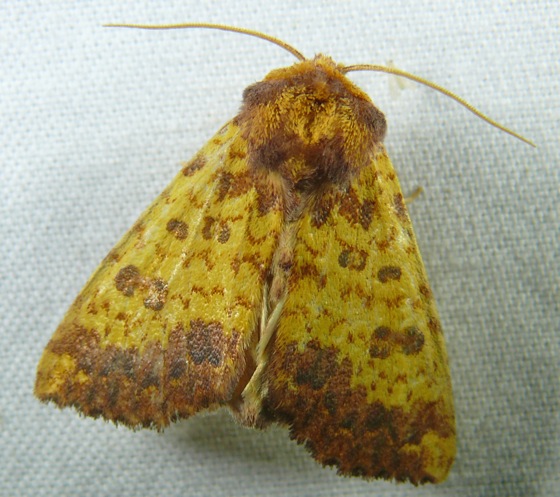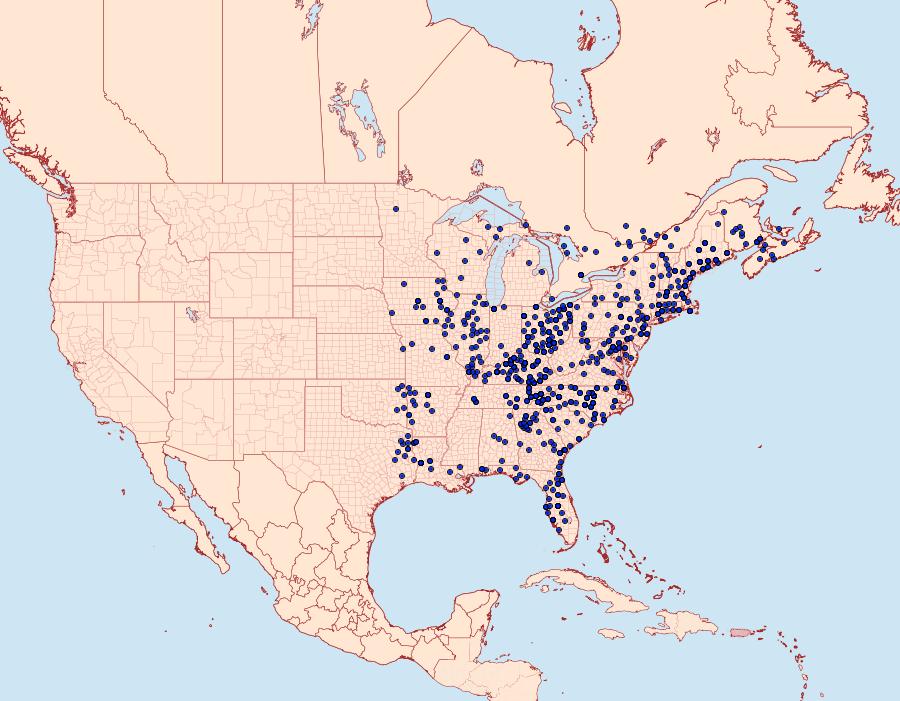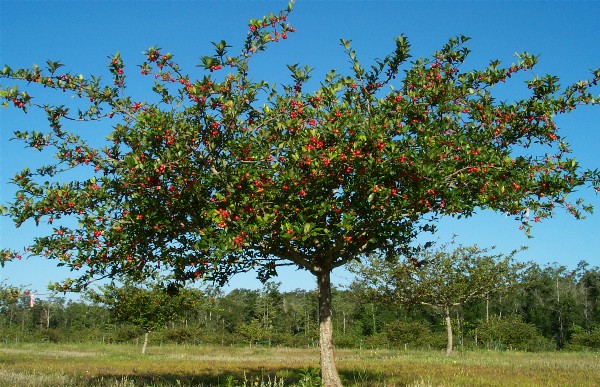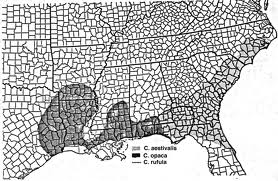Yes, this summer's plans include sugaring for moths. W.J.Holland, in his Moth Book gives a recipe that is mainly a mix of molasses and beer. Wagner's Caterpillars of Eastern North America is a quite detailed work and mentions the disappearance of Papaipema cerina in the eastern parts of the U.S., a disappearance whose cause is yet to be brought to light. If P. cerina is found in Wisconsin, it will be a rare find. One of its plants, Podophyllum is already up and growing in southern Wi.
Prairie Haven's webpage is remarkable, covering almost all moths of the region and great photography. Any field notes from badger2 will be sent to Prairie Haven to reinforce its educational content. Marcie's butterfly page shows Polygonia comma, which was the first sighted butterfly of the season, this weekend in southern Wi.
On foot out of Hamilton, Montana, the walk into Skalkaho was disturbing without a gun. Thick tree growth covered with Usnea moss grew right down to the road and one thinks about dangerous animals such as female moose with young. A fire had recently claimed 11,000 acres of timber, so most of the country was not normally green. Rides were offered across the pass towards Anaconda, and one local complained that the trees were not being allowed to be harvested. However, logging the wood would create slash that rodents would use for cover, increasing the possibility that some may vector Rocky Mountain Spotted fever. Woodman, Montana (no longer a post-office location) was where the most deadly strain of RMSF was found, a strain that killed its victims, if left untreated, in six days. A few years back, someone in Oklahoma went for a weekend outing and contracted RMSF. She ended up a quadruple amputee.
Badger2 has just received a packet of Silybum marianum (Milk Thistle) and the plants are a favorite of Vanessa cardui, a mascot cancer-studies butterfly and a favorite of the goldfinch. The search for Wisconsin native grass seeds, Elymus hystrix, will provide one host for forthcoming Papaipema cerina life-cycle studies.
Yes, the Prometheus (Callosamia promethea) in the video above feeds on Sassafras, at least in Michigan. Their cocoons are easily found on these trees, if the local population is stable with its host tree.
Prairie Haven's webpage is remarkable, covering almost all moths of the region and great photography. Any field notes from badger2 will be sent to Prairie Haven to reinforce its educational content. Marcie's butterfly page shows Polygonia comma, which was the first sighted butterfly of the season, this weekend in southern Wi.
On foot out of Hamilton, Montana, the walk into Skalkaho was disturbing without a gun. Thick tree growth covered with Usnea moss grew right down to the road and one thinks about dangerous animals such as female moose with young. A fire had recently claimed 11,000 acres of timber, so most of the country was not normally green. Rides were offered across the pass towards Anaconda, and one local complained that the trees were not being allowed to be harvested. However, logging the wood would create slash that rodents would use for cover, increasing the possibility that some may vector Rocky Mountain Spotted fever. Woodman, Montana (no longer a post-office location) was where the most deadly strain of RMSF was found, a strain that killed its victims, if left untreated, in six days. A few years back, someone in Oklahoma went for a weekend outing and contracted RMSF. She ended up a quadruple amputee.
Badger2 has just received a packet of Silybum marianum (Milk Thistle) and the plants are a favorite of Vanessa cardui, a mascot cancer-studies butterfly and a favorite of the goldfinch. The search for Wisconsin native grass seeds, Elymus hystrix, will provide one host for forthcoming Papaipema cerina life-cycle studies.
Yes, the Prometheus (Callosamia promethea) in the video above feeds on Sassafras, at least in Michigan. Their cocoons are easily found on these trees, if the local population is stable with its host tree.












